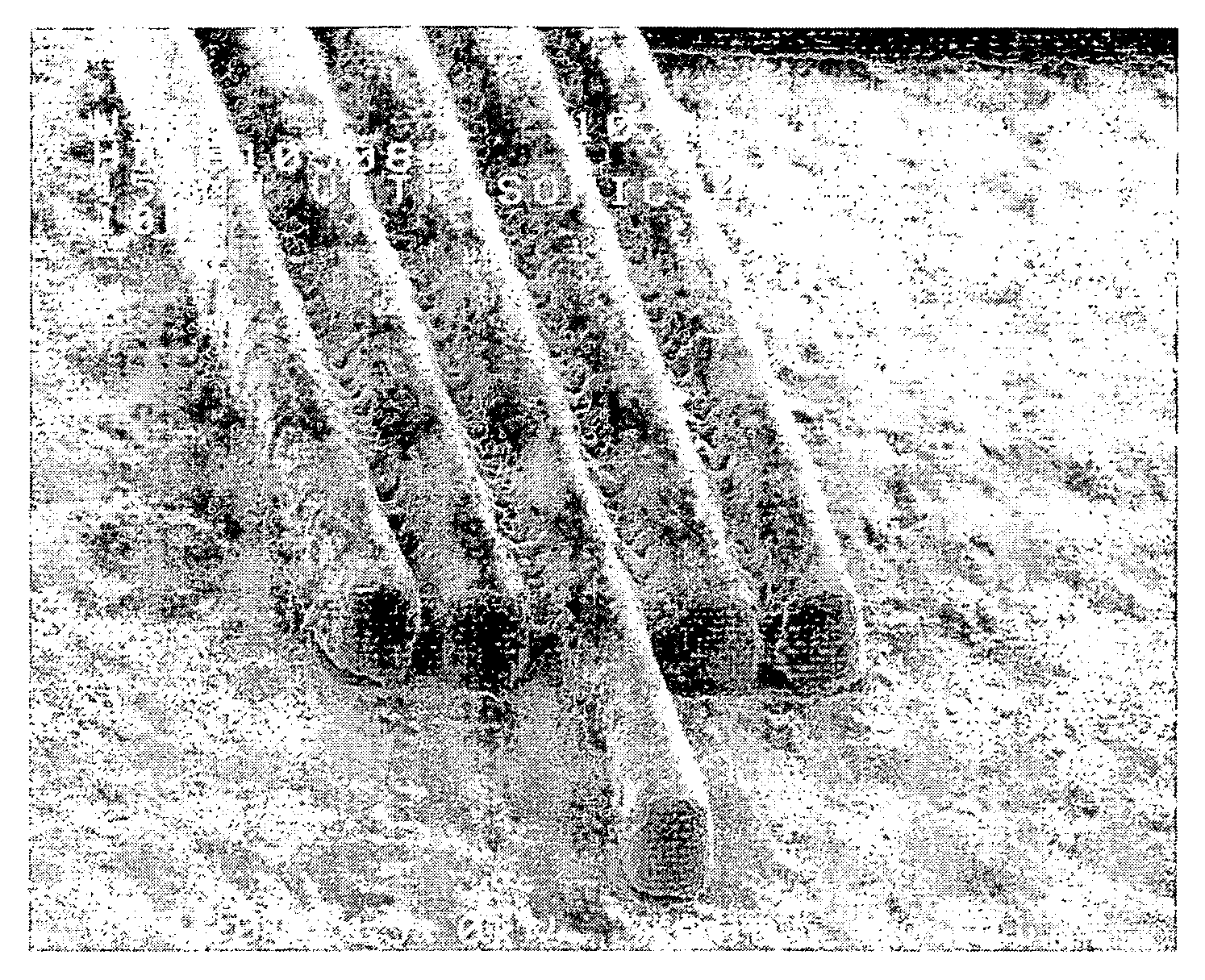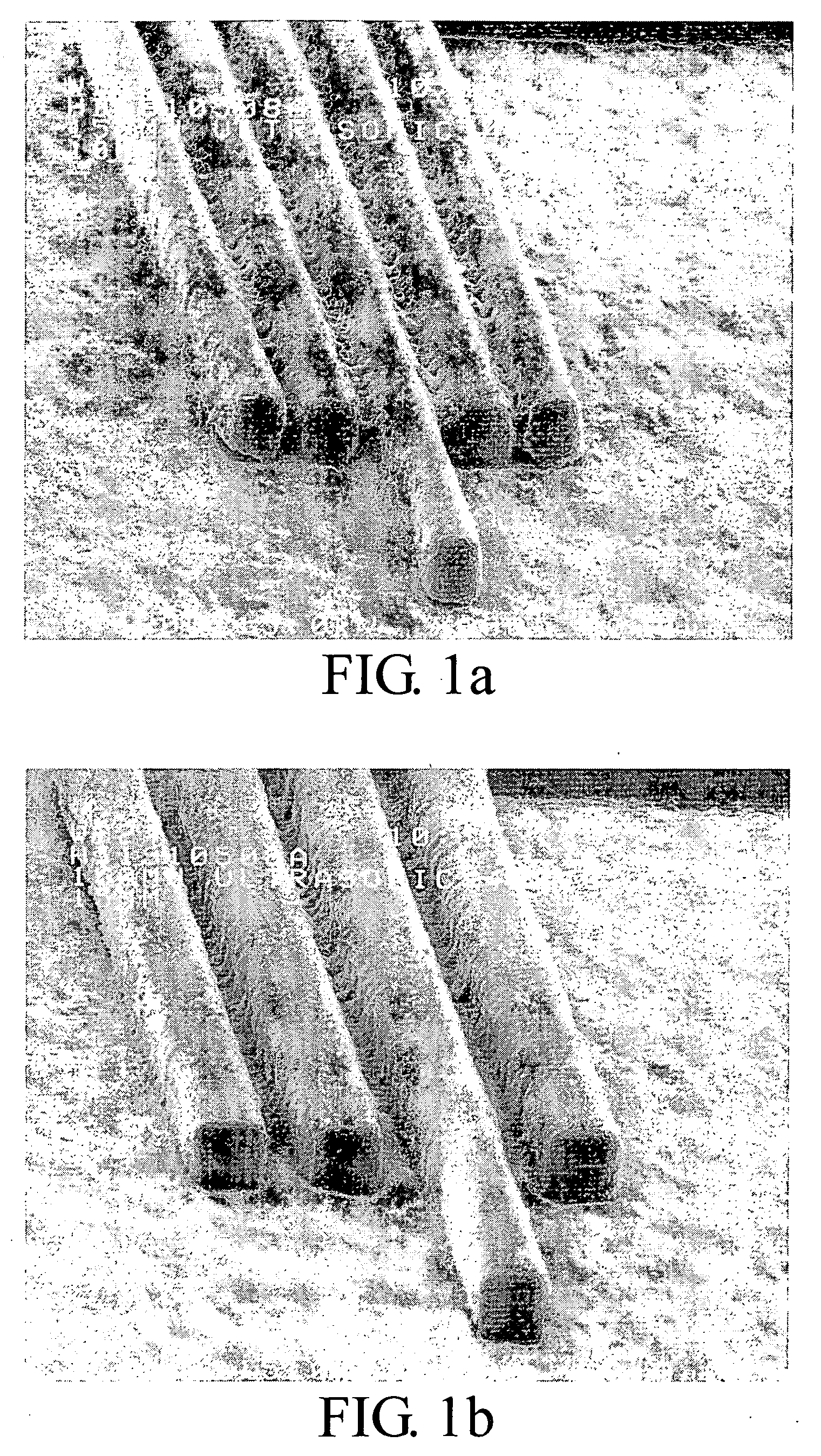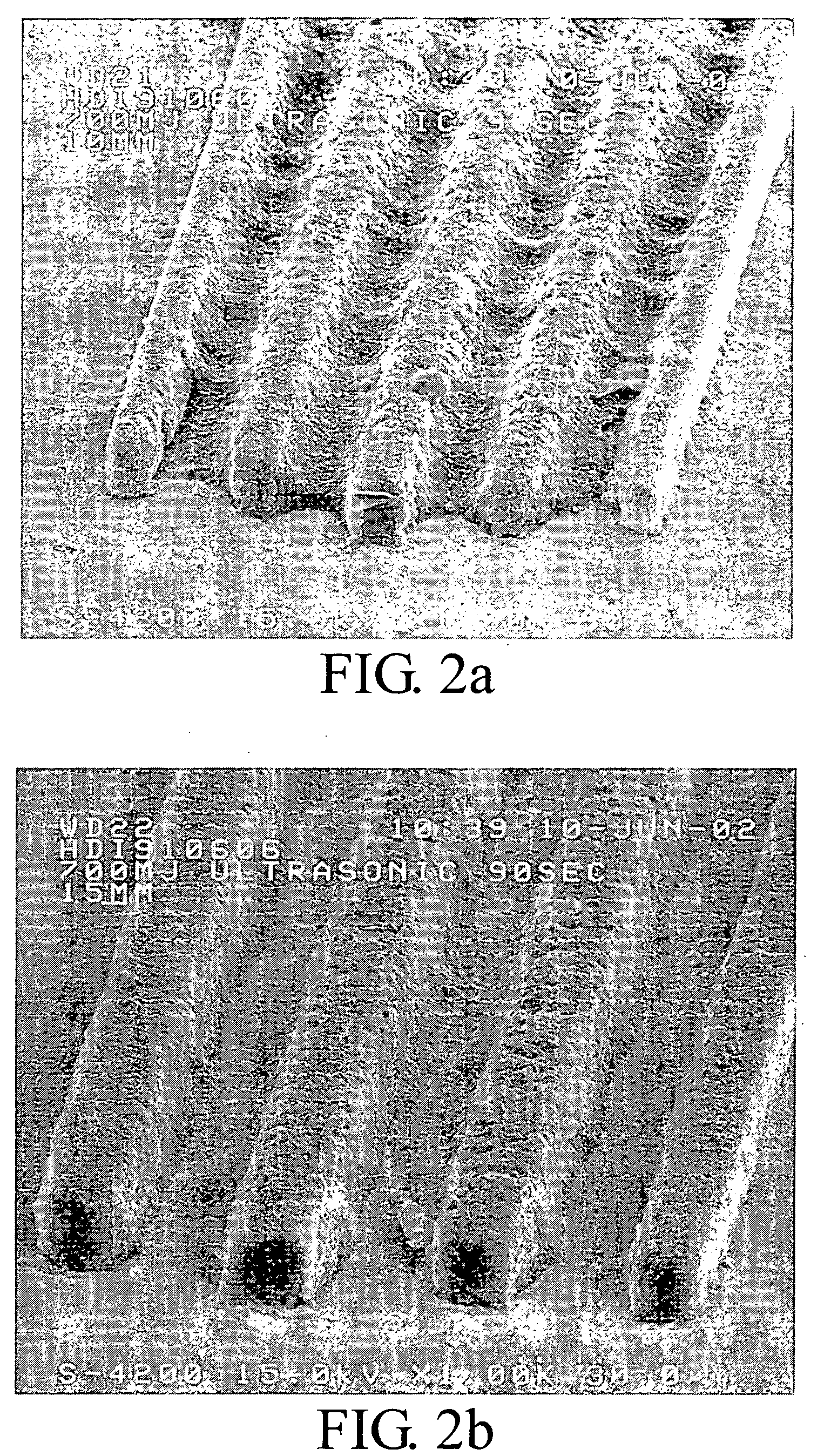Photoresist composition and method pattern forming using the same
a composition and composition technology, applied in the direction of photosensitive materials, photomechanical equipment, instruments, etc., can solve the problems of limited application of the present technology, difficult removal of residual photoresist, and limited photolithography resolution
- Summary
- Abstract
- Description
- Claims
- Application Information
AI Technical Summary
Benefits of technology
Problems solved by technology
Method used
Image
Examples
second example
[0061] Resin A (acrylic resin, sold and manufactured under the trade number of 500 by Chang Chun Plastic Co., Ltd) having a molecular weight of 98500 and an acid value of 174 mg-KOH / g was dissolved in propylene glycol monomethyl ether acetate (PMA) to prepare a resin solution having a resin content of about 30%.
[0062] A mixture of 20.0 g of the obtained resin solution, 0.25 g of 2, 4, or 6-trimethyl benzoyl diphenyl phosphine oxide (TPO) as a photoinitiator, 0.4 of Irgacure 907 (available from Ciba Geigy), and 0.159 g of isothioxanthone (ITX) was added into a round-bottom flask at room temperature.
[0063] After mixing completely, 1.967 g of ditrimethylolpropane tetraacrylate (SR-355), 2.02 g of dipentaerythritol monohydroxy pentaacrylate (SR-399), 1.31 g of ethoxylated bisphenol A diacrylate (SR-349), 0.945 g of cycloaliphatic diepoxide (SarCat.RTM.K126) as a cation reactive monomer, and 0.473 g of triaryl sulfonium hexafluorophosphate (50% in Propylene Carbonate) (SarCat.RTM.K185) a...
third example
[0067] Resin A (acrylic resin, sold and manufactured under the trade number of 500 by Chang Chun Plastic Co., Ltd) having a molecular weight of 98500 and an acid value of 174 mg-KOH / g was dissolved in propylene glycol monomethyl ether acetate (PMA)to prepare a resin solution having a resin content of about 30%.
[0068] A mixture of 20.0 g of the obtained resin solution, 0.125 g of 2, 4, or 6-trimethyl benzoyl diphenyl phosphine oxide (TPO) as a photoinitiator, and 0.2 of Irgacure 907 (available from Ciba Geigy), was added into a round-bottom flask at room temperature.
[0069] After mixing completely, 1.125 g of ditrimethylolpropane tetraacrylate (SR-355), 1.155 g of dipentaerythritol monohydroxy pentaacrylate (SR-399), 0.75 g of ethoxylated bisphenol A diacrylate (SR-349), 2.27 g of cycloaliphatic diepoxide (SarCatRK126) as a cation reactive monomer, 0.76 g of 1,1,1-tris-(p-hydroxyphenyl) ethane glycidyl ether (THPE-GE) and 0.61 g of triaryl sulfonium hexafluorophosphate (50% in Propyle...
PUM
| Property | Measurement | Unit |
|---|---|---|
| wavelength | aaaaa | aaaaa |
| thick | aaaaa | aaaaa |
| width | aaaaa | aaaaa |
Abstract
Description
Claims
Application Information
 Login to View More
Login to View More - R&D
- Intellectual Property
- Life Sciences
- Materials
- Tech Scout
- Unparalleled Data Quality
- Higher Quality Content
- 60% Fewer Hallucinations
Browse by: Latest US Patents, China's latest patents, Technical Efficacy Thesaurus, Application Domain, Technology Topic, Popular Technical Reports.
© 2025 PatSnap. All rights reserved.Legal|Privacy policy|Modern Slavery Act Transparency Statement|Sitemap|About US| Contact US: help@patsnap.com



